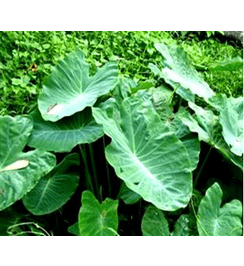PHYTOCHEMICAL ANALYSIS AND ANTIMICROBIAL ACTIVITY OF COLOCASIA ESCULENTA (TARO) MEDICINAL PLANT LEAVES USED IN FOLK MEDICINE FOR TREATMENT OF WOUNDS AND BURNS IN HUFASH DISTRICT AL MAHWEET GOVERNORATE–YEMEN
Keywords:
Antimicrobial, antioxidative, Colocasia esculenta, phytochemicalAbstract
Objective: Colocasia esculenta (CE) Linn. (Family: Araceae) is an annual herbaceous plant that is known since ancient times for its curative properties. The objective of current study was phytochemical screening of chemical constituents of Colocasia esculenta extract.
Methods: In this study methanolic and aqueous extracts of one plant namely Colocasia esculenta, were screened for the presence of phytochemical constituents and tested for their antimicrobial and antioxidant activity.
Results: TLC tests conducted revealed Rf values in the leaves for alkaloids, flavonoids, tannins, phenols and saponins (0.95-0.96-0.97-0.96-0.97) respectively. The antimicrobial activity extracts against four bacterial isolates Staphylococcus aureus, Escherichia coli, Pseudomonas aeruginosa and Klebsiella sp. and a single fungal isolate Candida albicans with concentrations (0.5 mg/ml, and 1.0 mg/ml) of the extract were added to the disc and respective solvent was used as negative control. The antioxidative activity of leaf was evaluated by using 1,1- diphenyl-2 picrylhydrazyl (DPPH), the results showed are 86.5%, lowest from standard, ascorbic acid 87.5%.
Conclusion: The qualitative phytochemical analysis revealed the results showed presence of alkaloids, terpenoids, glycosides, resins, saponins, tannins, flavonoids, phenols, and amino acid were present in the methanol extract, with absence of glycosides, and amino acids in the aqueous extracts in leaves plant.

Peer Review History:
Received 1 February 2019; Revised 12 March; Accepted 28 April; Available online 15 May 2019
Academic Editor: Dr. Nuray Arı , Ankara University, Turkiye, ari@ankara.edu.tr
, Ankara University, Turkiye, ari@ankara.edu.tr
Reviewer(s) detail:
Dr. Gehan Fawzy Abdel Raoof Kandeel , Pharmacognosy Department, National Research Centre, Dokki, 12622, Giza, Egypt, gehankandeel9@yahoo.com
, Pharmacognosy Department, National Research Centre, Dokki, 12622, Giza, Egypt, gehankandeel9@yahoo.com
Dr. O.J Owolabi , University of Benin, Nigeria, owolabi@uniben.edu
, University of Benin, Nigeria, owolabi@uniben.edu
Downloads

Published
How to Cite
Issue
Section

This work is licensed under a Creative Commons Attribution-NonCommercial 4.0 International License.









 .
.